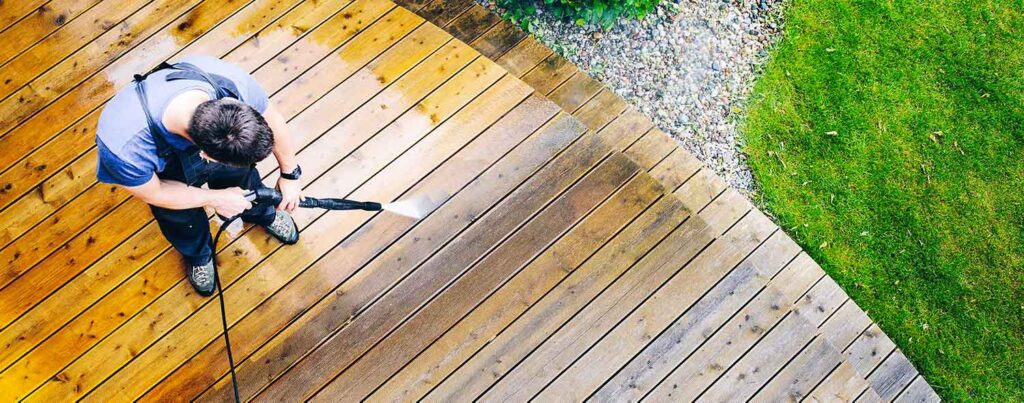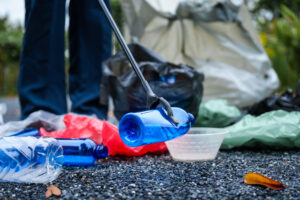Everyone’s heard of pressure washing. However, few people know what this cleaning method actually entails, and know how to use a pressure washer. This tool is not a garden hose, nor does it produce a stream of water equivalent to the water pressure of a regular water outlet.
Pressure Washer Tips for Safe Use
Wear protective gear. No shorts and flip flops. Think safety goggles for eye protection, work gloves, enclosed shoes (preferably steel-toed boots), ear protection (especially with gas power washers), and pants.
Technical Terminology About Pressure Washer
Terms you should know before purchasing:
- PSI – pounds per square inch, measures how much pressure is produced by the machine. The bigger the PSI, the stronger the spray it can produce.
- GPM – gallons per minute, the flow rate of the water. The higher the GPM, the less water efficient the machine is.
- CU – cleaning units = PSI x GPM. Generally, the higher the CU, the more powerful and efficient the machine is.
Guide on Pressure Washers Spray Nozzles
Some pressure washers come with a single variable pressure spray nozzle that you can twist to adjust between zero to 60-degree spray patterns. Most come with 4 to 5 color-coded nozzles that you must change manually between jobs.
Your nozzles are the most important accessory when determining how much cleaning power you need for specific jobs. These are generally color coded from strongest to lowest pressure:
Power Washers Nozzles
Red (0 degree) – Removing tough stains or debris (caked on mud, dried gum or sap, rust) from very small areas on concrete or metal. Not for wood or siding! You probably will never need this one.
Yellow (15 degree) – Surface prep to remove dirt, mildew, or paint before painting or re-sealing. Can remove tough grime from a safe distance on hard surfaces.
Green (25 degree) – Most common for home use. Good for cars, boats, lawn furniture, driveways, and decks.
White (40 degree) – Gentler, wider spray for fragile surfaces such as windows, blinds, flower pots, etc.
Black (low-pressure soap nozzle) – Low pressure for applying soap or detergents.
Turbo or rotary nozzle – These sometimes come with the pressure washer, but not usually. They produce the pressure of a 0-degree nozzle with the spray area of a 25-degree nozzle, plus they rotate at 1800 – 3000 RPM. They can cut cleaning time in half for caked-on dirt and grime.
Types of Pressure Washers
Electric or gas pressure washer? Professionals have two types of tools that they use depending on the job.
Electric Power Washer
An electric pressure washer is an electric models must be connected to a power outlet, making them less versatile than gas-powered washers. However, they’re less noisy and more environmentally friendly.
Gas Pressure Washers
Gas power washer, which are cordless, are often used for large outdoor jobs. They’re generally more powerful than electric models, but noisier. In addition, they can emit carbon monoxide, making them unsuitable for areas with little or no ventilation, such as the inside of buildings. To ensure everyone’s safety, the pressure washing technician inspects the location before choosing the right equipment.
What does pressure wash clean off?
When you know how to use a pressure washer, pressure washing can remove a wide range of substances:
- Oil
- Tough Stains
- Grease
- Flaking paint
- Hard water
- Mould and mildew
- Foam
- Mineral deposits
- Dust
- Chewing gum
- Graffiti
A number of surfaces can withstand pressure washing, as long as you know how to use a pressure washer and ensure that the right pressure, nozzle, and cleaning agent are used.
Here are the most common surfaces cleaned with a pressure washer:
- Concrete
- Wood
- Vinyl
- Metal
- Brick
- Stucco
In practical terms, professional pressure washing can restore the following to pristine condition:
- Sidewalks
- Garage floors
- Outdoor stairs
- Entrances
- Parking lots
- Outdoor furniture
- Cars
- Patios
- Fences
- Dog houses
- Lawnmowers
- Garbage areas
- Heavy equipment
- Statues
Does your property need a fresh coat of paint? Pressure washing is a great way to prep the surfaces.
It can also be done to improve your house’s curb appeal before putting it on the market.
Pressure Washing Steps
Every pressure washing contract has its own particular requirements. That said, a professional pressure washing job typically goes as follows:
- The technician evaluates the surface and the substances to be removed;
- They secure the work area;
- They clear all debris, furniture, and equipment;
- They dry-brush the surface, if necessary;
- They rinse the surface to wash away any sand or dust residue;
- They apply a cleaning solution depending on the substances to be removed;
- They let the solution sit for a few minutes;
- They rinse the surface one last time.
How long does pressure wash take?
The amount of time required depends on several factors, including the surface area and the level of dirt build-up. Some jobs take a few hours, while others require several days.
That’s it! Now you know how professional pressure wash works and a little more about how to use a pressure washer. If you have any questions, contact us, and we’ll be happy to answer them.
Can you pressure wash a house in the winter? How to clean outside windows with pressure washer? How to pressure wash a deck? These are questions you may have for your home too, and we are here to give you answers!



